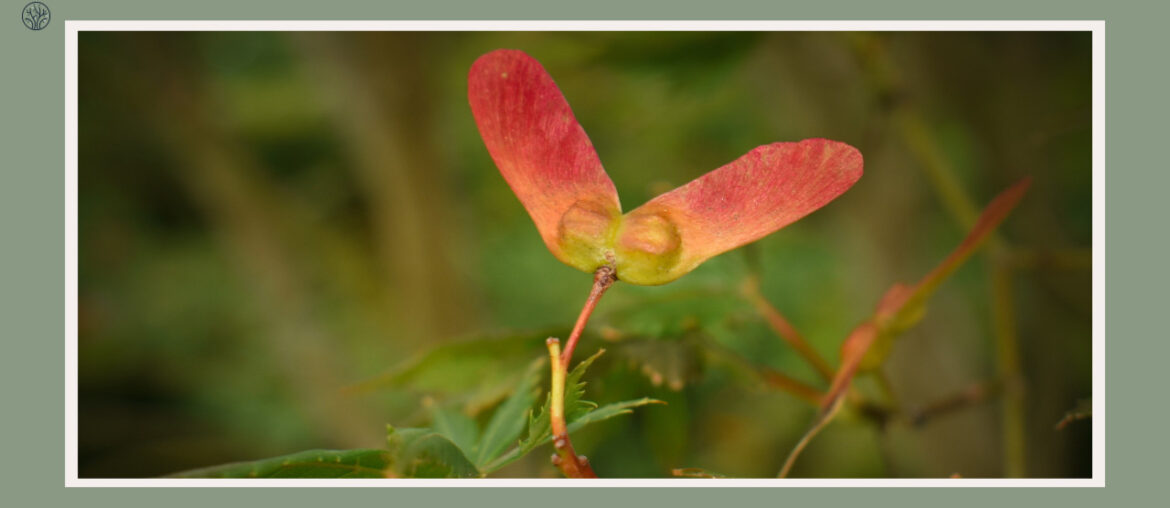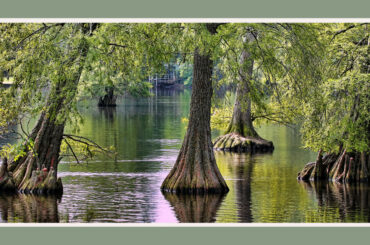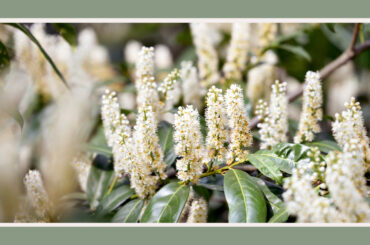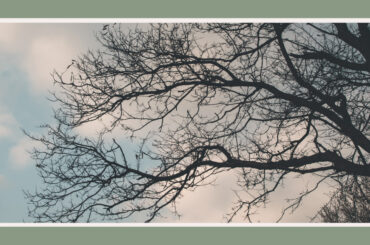Maple tree seeds are commonly known as “helicopter seeds” due to their unique shape and flight pattern. These seeds have a thin, flat, and papery wing attached to a rounded seed pod. When they fall from the tree, the wing causes them to spin, resembling the blades of a helicopter. This fascinating design helps the seeds to be carried away by the wind, aiding in their dispersal. In this article, we’ll delve into a comprehensive list of trees that produce these captivating helicopter seeds.
- 1. Red Maple
- 2. Silver Maple
- 3. Norway Maple/Harlequin Maple
- 4. Japanese Maple
- 5. Sycamore
- 6. Ash Tree
- 7. Field Maple
- 8. Winged Elm
- 9. Common Hoptree
- 10. Tree Of Heaven
- 11. Tulip Tree
- 12. Tipu Tree
- 13. Green Ash
- 14. Velvet Ash
- Best Places To Find Maple Seedlings
- Importance Of Helicopter Seeds In Nature
- FAQs
1. Red Maple
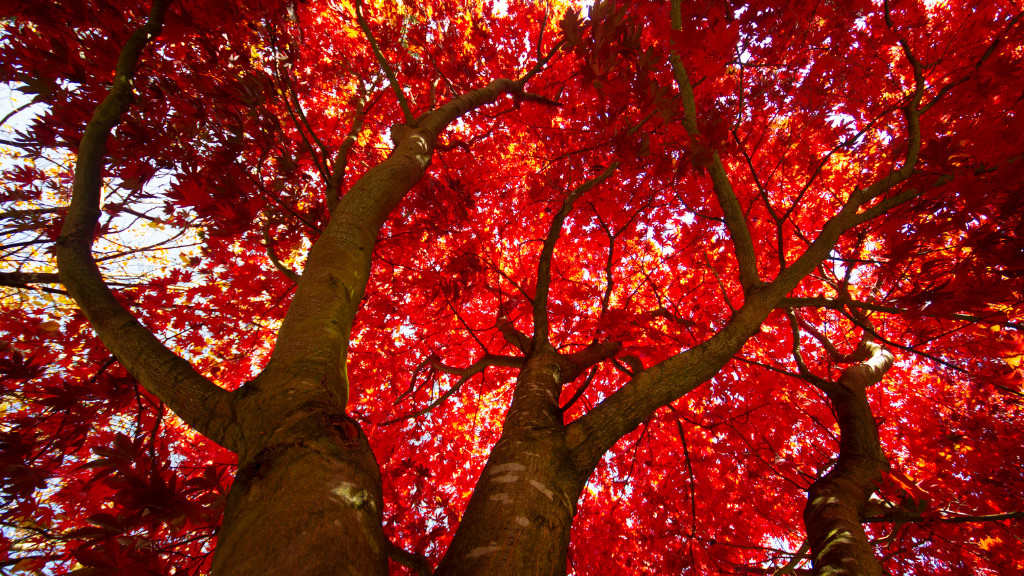
The Red Maple is a deciduous tree native to the eastern and north-central United States. It’s a species that captures attention with its vibrant fall foliage and unique seed pods, commonly known as “helicopter seeds.”
- Appearance: Native to the eastern and north-central U.S.
- Seeds: Two-winged samara, often reddish.
- Growing Conditions: Thrives in USDA Growing Zones 3 to 9.
The Red Maple is a fast-growing hardwood tree, reaching heights of 40 to 70 feet. Its seeds are encased in a two-winged samara, which often appears in a reddish hue. These seeds are well-suited for a variety of soil types, from sandy to clay, and are tolerant of urban pollution.
2. Silver Maple
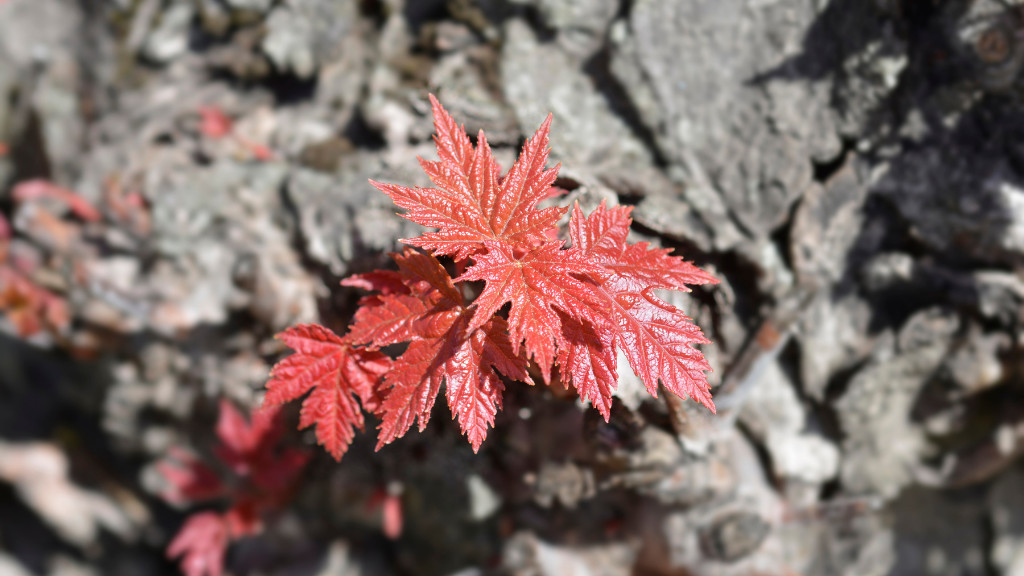
The Silver Maple is another native tree that grows rapidly, reaching heights of 50 to 80 feet. It’s especially popular for its ability to tolerate standing water for extended periods, making it ideal for planting along riverbanks.
- Appearance: Native, grows 50 to 80 feet tall.
- Seeds: Winged and prolific.
- Growing Conditions: Adaptable to various soils, USDA Growing Zones 3 to 9.
The Silver Maple is famous for its winged seeds, which are prolific and quickly drop and sprout in any open soil. The tree is adaptable to a range of soil conditions and is also resistance to pests and diseases.
3. Norway Maple/Harlequin Maple
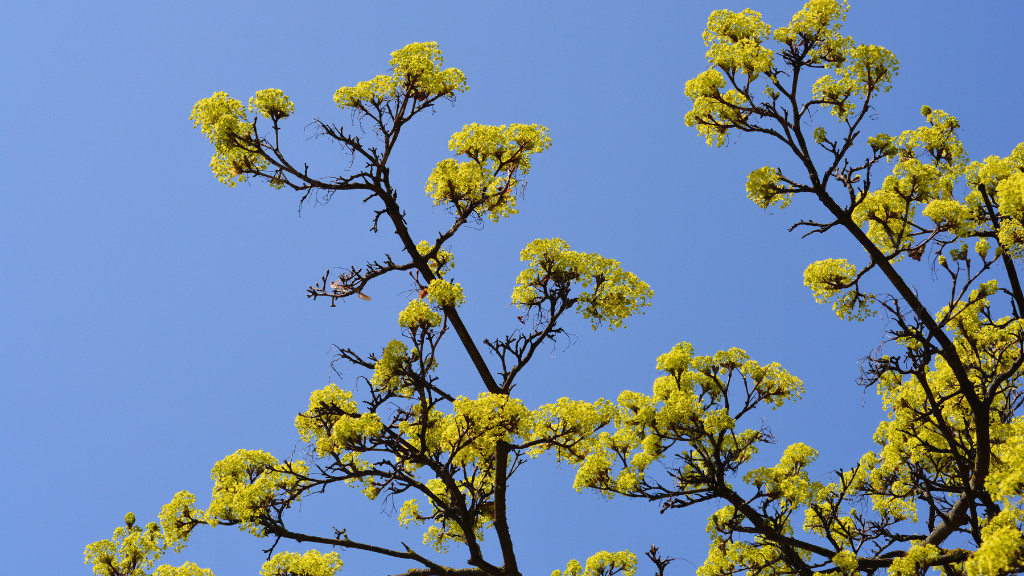
The Norway Maple, also known as Harlequin Maple, is a non-native species that has become invasive in some areas. It can grow up to 60 feet tall and creates a dense canopy that often overshadows native maples.
- Appearance: Non-native, grows up to 60 feet tall.
- Seeds: Shade-tolerant, spreads invasively.
- Growing Conditions: Thrives in well-drained clay or loam soils, USDA Growing Zones 3 to 7.
The Norway Maple is more shade-tolerant compared to other maples and spreads more invasively. Its seeds are similar to those of other maples but have a darker color and thicker wing structure. The tree thrives in well-drained clay or loam soils.
4. Japanese Maple
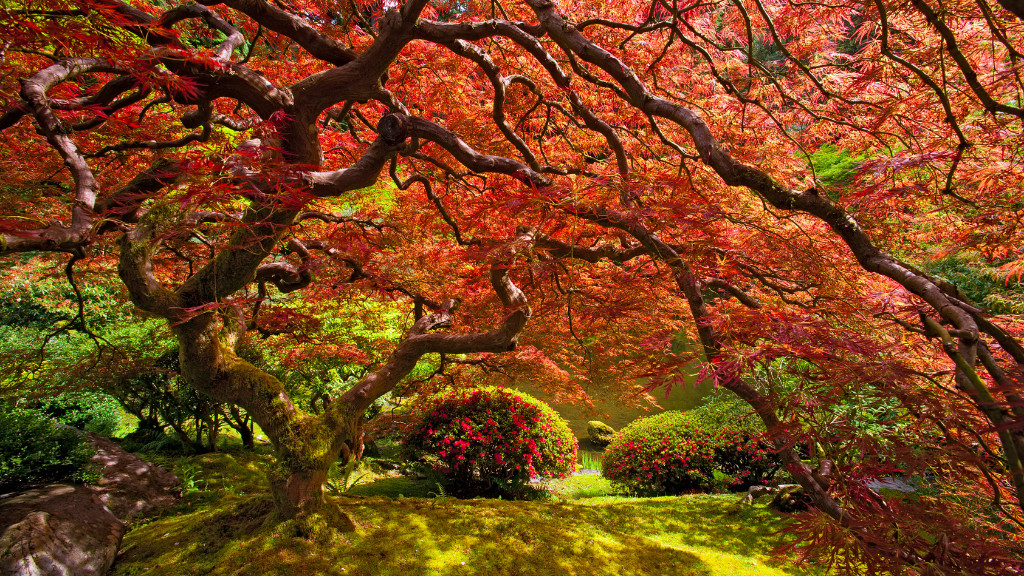
The Japanese Maple is a smaller tree species, often used in ornamental landscaping. It’s native to Japan, Korea, and China, and has intricate leaf patterns and vibrant autumn colors.
- Appearance: Native to Japan, Korea, and China.
- Seeds: Small, winged samaras.
- Growing Conditions: Best in USDA Growing Zones 5 to 8.
The Japanese Maple typically grows to 15 to 25 feet, making it a popular choice for smaller gardens or as a decorative tree. Its seeds are small, winged samaras, similar to other maples. The tree prefers well-drained soil and partial shade for optimal growth.
5. Sycamore
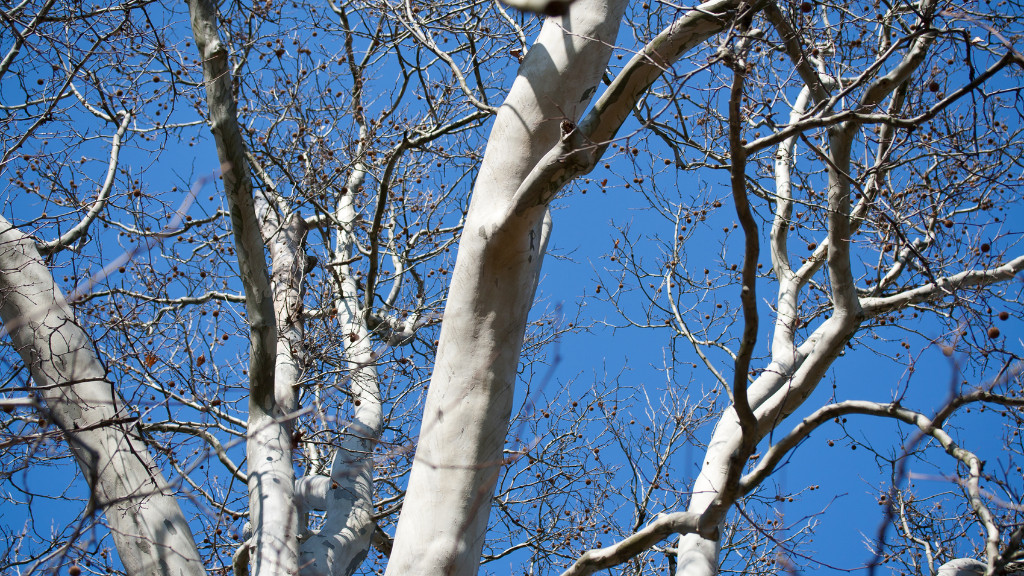
The Sycamore is a large, deciduous tree that is native to the eastern United States. It’s easily recognizable by its mottled, exfoliating bark and large, palmate leaves.
- Appearance: Native to the eastern U.S., large and deciduous.
- Seeds: Ball-shaped seed clusters.
- Growing Conditions: Thrives in USDA Growing Zones 4 to 9.
The Sycamore has a decent growth rate and can grow up to 100 feet tall. You can find these near rivers and streams. Unlike maples, its seeds are not wing-shaped but instead, shape like a cluster of balls. These clusters disintegrate to release the seeds. The tree is adaptable to various soil types but prefers moist, well-drained soil.
6. Ash Tree
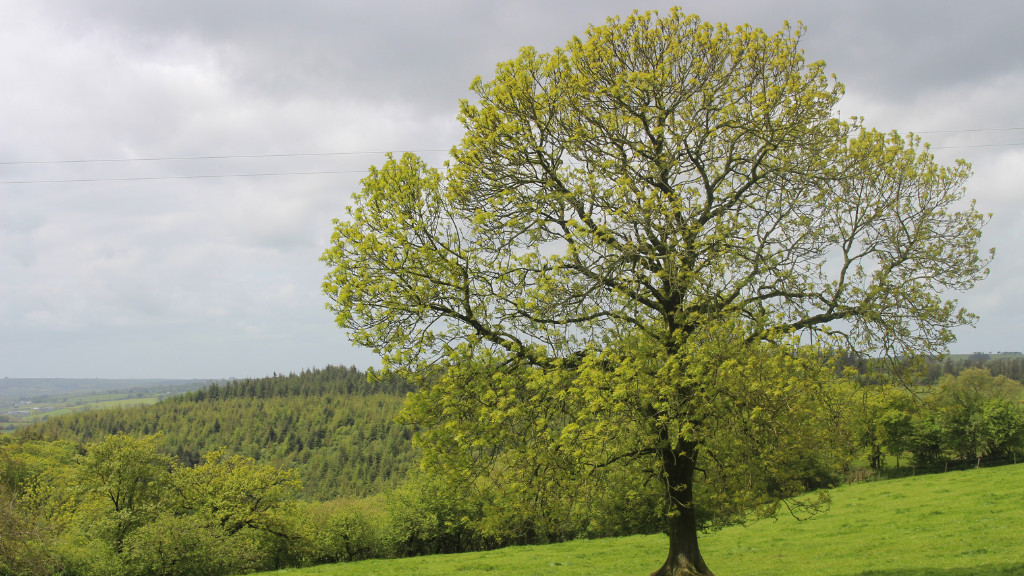
The Ash Tree is a common deciduous tree that thrives in Europe, Asia, and North America. It has compound leaves and strong, flexible wood.
- Appearance: Found in Europe, Asia, and North America.
- Seeds: Winged samaras, similar to maples.
- Growing Conditions: Adaptable, USDA Growing Zones vary by species.
Ash Trees can grow up to 80 feet tall and have special exfoliating bark, and compound leaves, which consist of multiple leaflets. The seeds are winged samaras, similar to those of maples, but are long and narrow. The tree is adaptable to a range of soil conditions and climates, with growing zones varying by species.
7. Field Maple
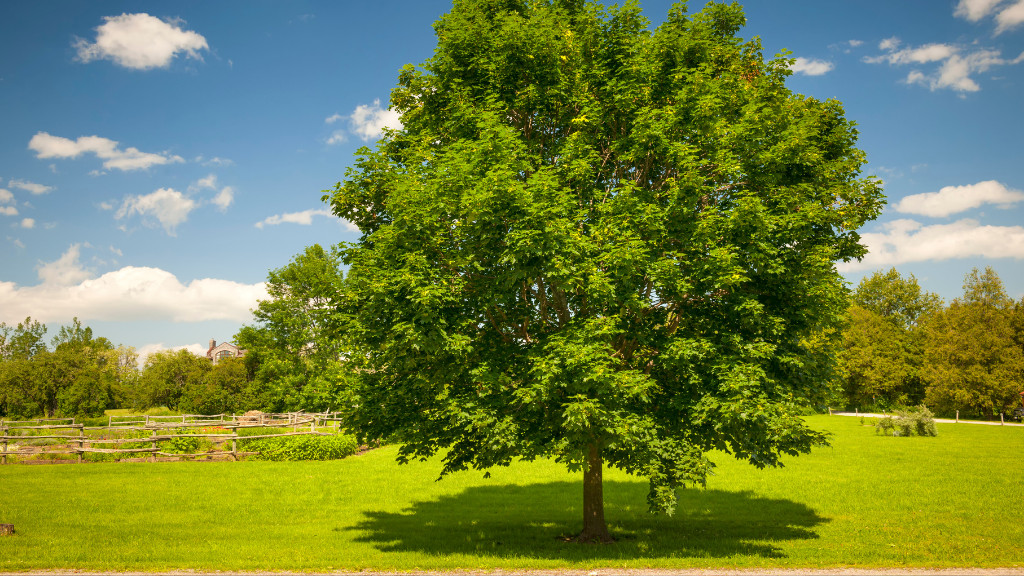
The Field Maple is native to Europe and parts of Asia. It’s the only maple native to the UK and often grows in hedgerows and on the edges of forests.
- Appearance: Native to Europe and parts of Asia.
- Seeds: Winged samaras, smaller than other maples.
- Growing Conditions: Thrives in USDA Growing Zones 5 to 8.
The Field Maple is a relatively small tree, usually growing to heights of 15 to 50 feet. Its seeds are winged samaras, similar to other maples, but tend to be smaller in size. The tree is adaptable to a variety of soil types but prefers well-drained, moist soil for optimal growth.
8. Winged Elm
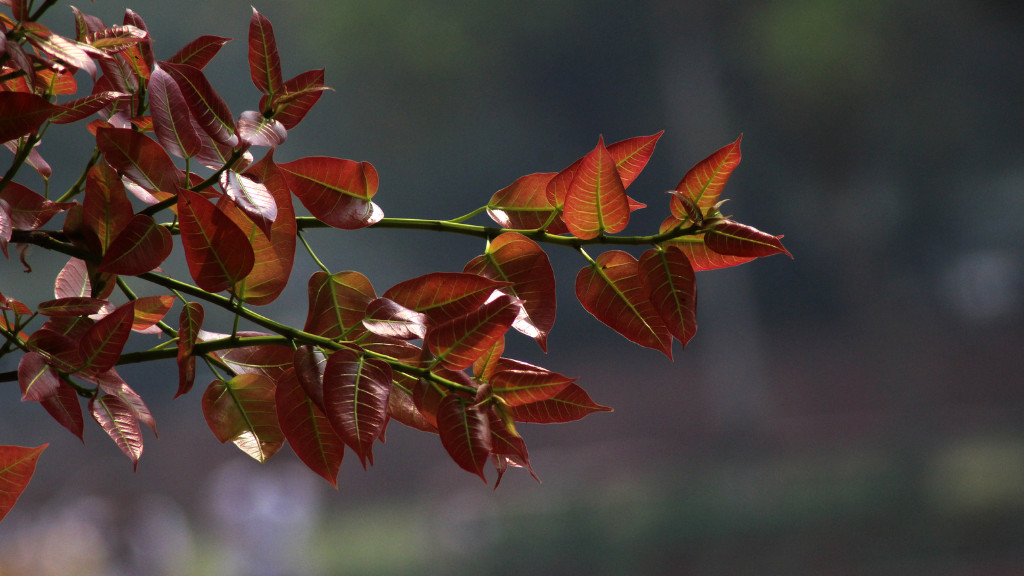
The Winged Elm is native to the southeastern United States and is famous for the unique, corky wings that appear on its branches.
- Appearance: Native to the southeastern U.S.
- Seeds: Small, winged samaras.
- Growing Conditions: Adaptable, USDA Growing Zones 6 to 9.
Winged Elm trees can grow up to 40 to 60 feet tall and can grow in both dry and wet habitats. The tree is highly adaptable and can grow in a variety of soil types, including sandy, loamy, and clay soils.
9. Common Hoptree
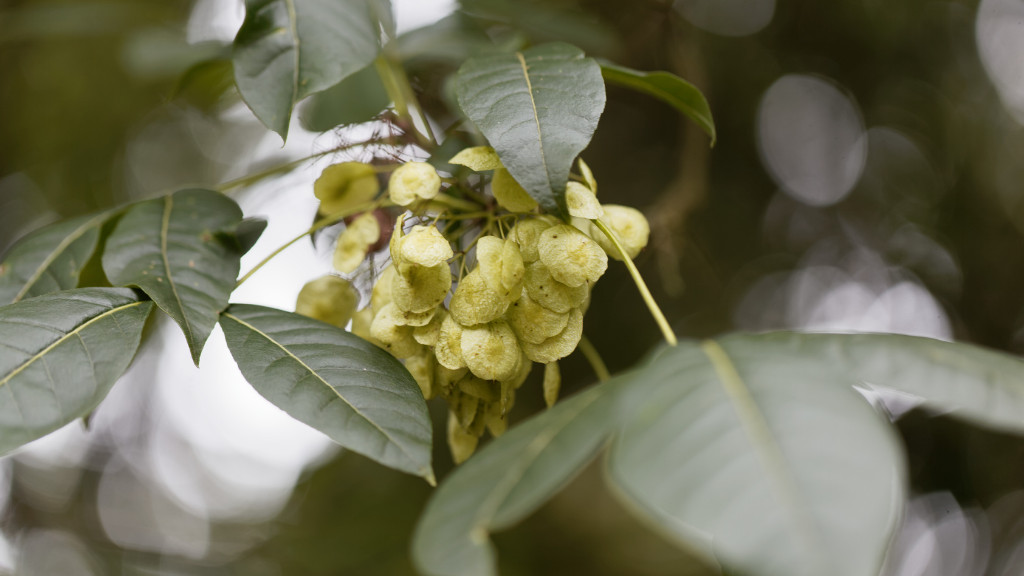
The Common Hoptree is a small, shrubby tree native to North America. It often grows along streams and in rocky areas.
- Appearance: Native to North America, small and shrubby.
- Seeds: Winged seeds contained in a papery disk.
- Growing Conditions: Prefers well-drained soil, USDA Growing Zones 4 to 8.
The Common Hoptree typically grows to a height of 15 to 20 feet. Unlike maples, its seeds are not samaras but are instead winged seeds contained in a papery disk. These disks often cluster together, resembling the fruit of hops, hence the name “Hoptree.” The tree prefers well-drained soil and is tolerant of rocky and sandy conditions.
10. Tree Of Heaven
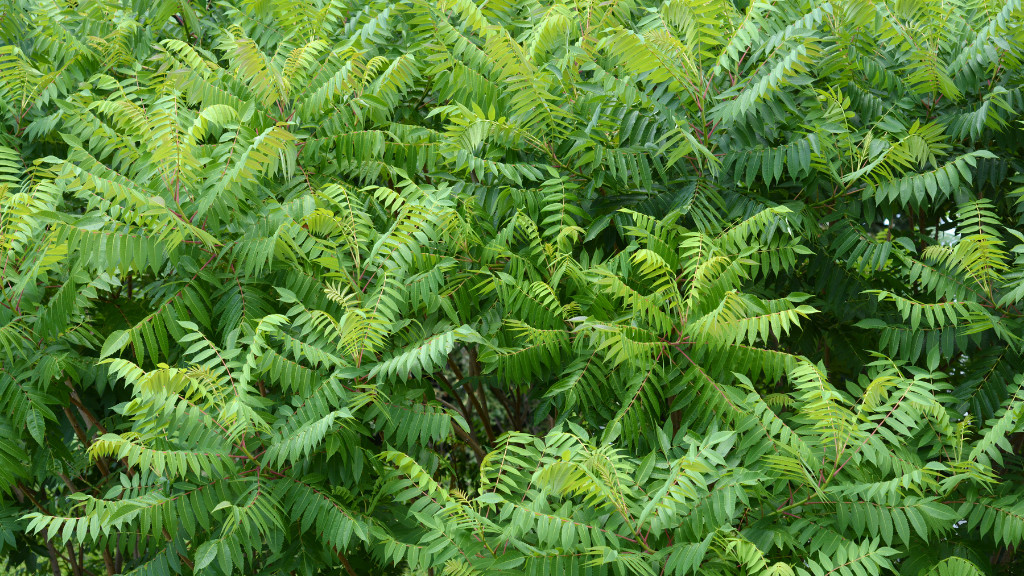
The Tree of Heaven, originally from China, is now found in various parts of the world, including the United States. It’s famous for its rapid growth, fern-like leaves, and ability to thrive in poor soil conditions.
- Appearance: Originally from China, invasive in some areas.
- Seeds: Winged samaras.
- Growing Conditions: Highly adaptable, USDA Growing Zones 4 to 8.
The Tree of Heaven can grow up to 80 feet tall in disturbed areas like roadsides and vacant lots. The tree is highly adaptable and can grow in a variety of soil types, including poor, infertile soils.
11. Tulip Tree
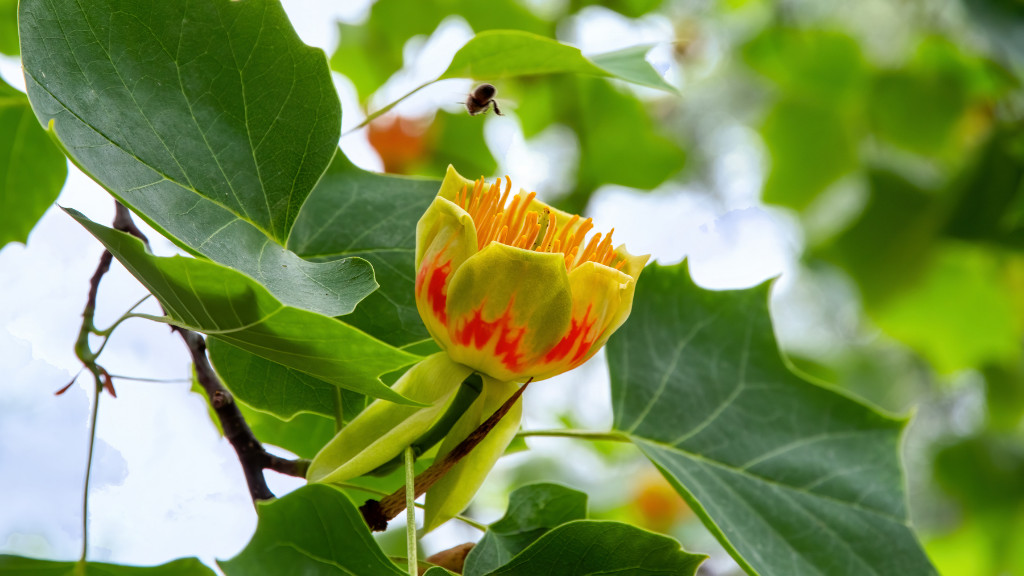
The Tulip Tree is native to the eastern United States and is known for its unique, tulip-shaped leaves and flowers.
- Appearance: Native to the eastern U.S.
- Seeds: Cone-like structures with winged seeds.
- Growing Conditions: Prefers moist, well-drained soil, USDA Growing Zones 4 to 9.
The Tulip Tree can grow impressively tall, often reaching heights of 70 to 90 feet. Unlike maples, its seeds are not samaras but instead have cone-like structures. These cones disintegrate to release the winged seeds inside. The tree prefers moist, well-drained soil and often grows in mixed hardwood forests.
12. Tipu Tree
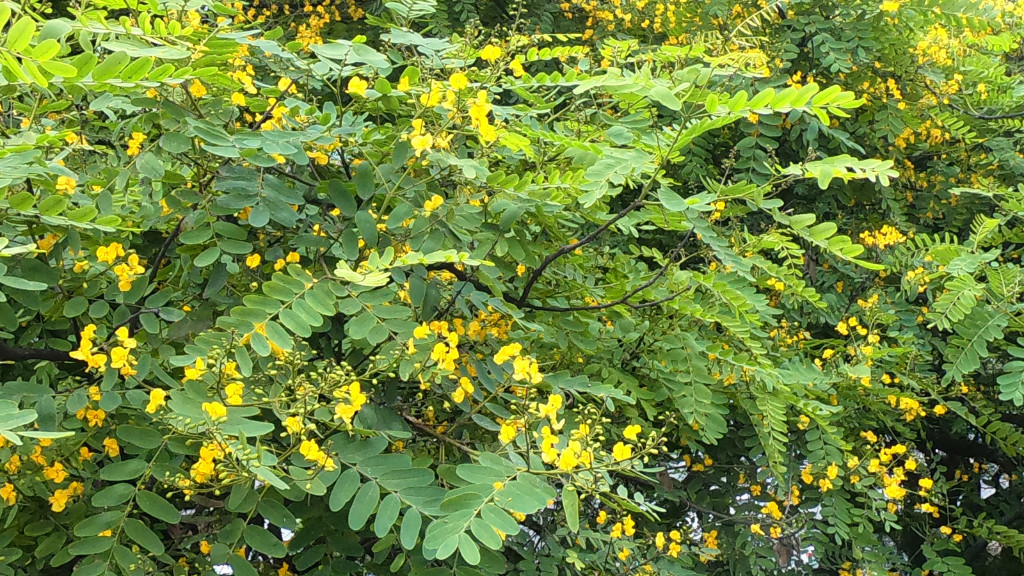
The Tipu Tree, native to South America, is a fast-growing tree often used for shade and ornamental purposes.
- Appearance: Native to South America.
- Seeds: Pod-like structures with small seeds.
- Growing Conditions: Thrives in hot climates, USDA Growing Zones 9 to 11.
The Tipu Tree can grow up to 30 to 50 feet tall and has feathery, bright green foliage. It covers its seeds in pod-like structures unlike those of maples or elms. The tree grows best in hot climates and prefers well-drained soil for optimal growth.
13. Green Ash
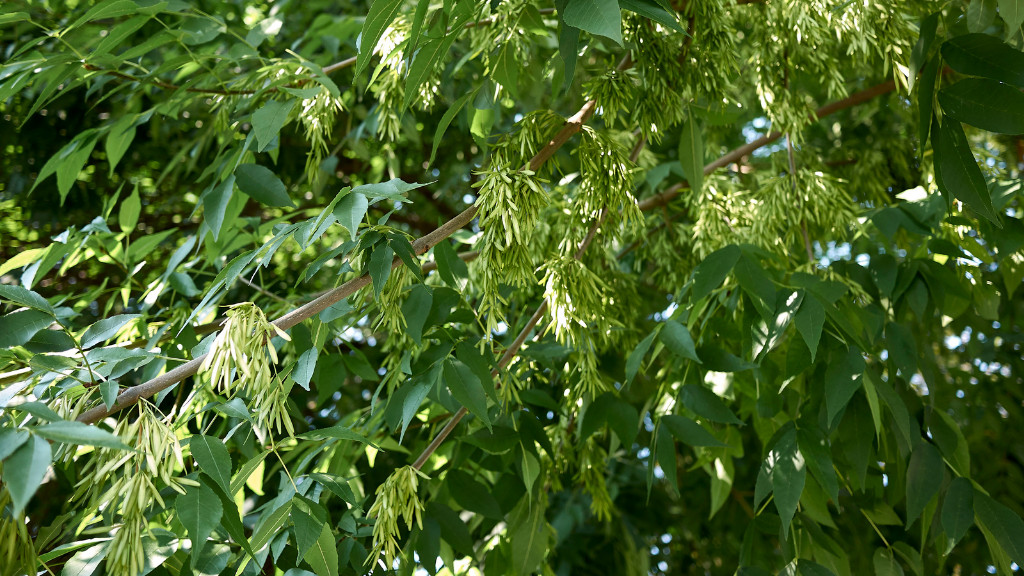
The Green Ash is a native North American tree commonly found in floodplains and along riverbanks. It’s a hardy species, often used in urban and suburban landscaping.
- Appearance: Native to North America, commonly found in floodplains.
- Seeds: Winged samaras.
- Growing Conditions: Adaptable, USDA Growing Zones 3 to 9.
The Green Ash can grow up to 60 feet tall and has compound leaves and strong wood. The tree is highly adaptable and can grow in a variety of soil types, including sandy, loamy, and clay soils.
14. Velvet Ash
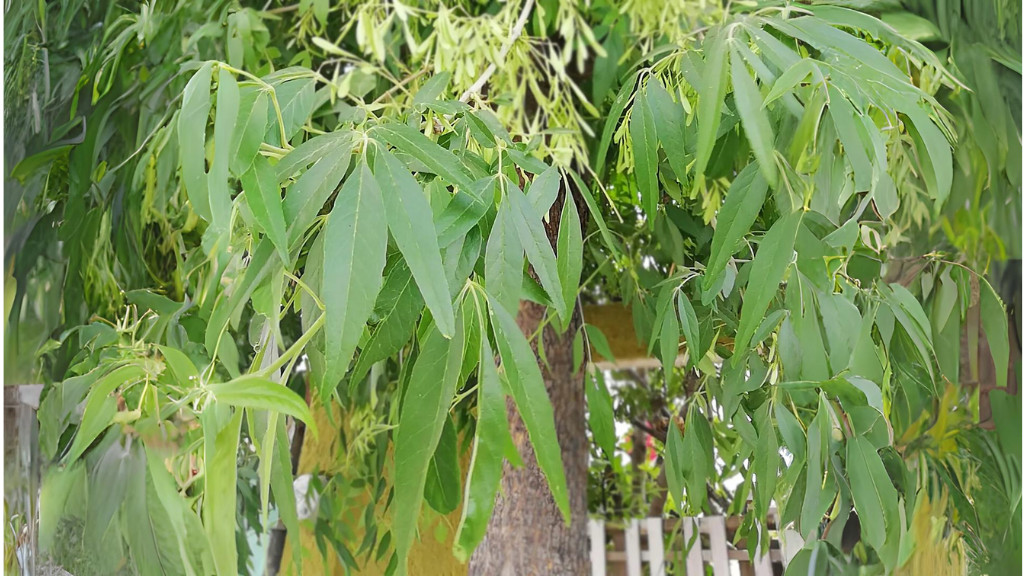
The Velvet Ash is native to the southwestern United States and often grows in riparian areas and canyons.
- Appearance: Native to the southwestern U.S.
- Seeds: Winged samaras.
- Growing Conditions: Prefers moist soil, USDA Growing Zones 6 to 9.
The Velvet Ash typically grows to a height of 30 to 50 feet and has velvety twigs and leaves. The tree prefers moist, well-drained soil and often grows near water sources like rivers and streams.
Best Places To Find Maple Seedlings
You can find maple seedlings in areas where mature maple trees are abundant. These areas often include parks, forests, and even suburban neighborhoods with well-established trees.
- Best Places: Parks, forests, suburban neighborhoods.
- Effective Methods to Remove Unwanted Seedlings: Hand-pulling, herbicides.
If you’re keen on finding maple seedlings, local parks and forests are your best starting points. These public spaces often serve as natural nurseries for a variety of maple species.
Suburban neighborhoods with older trees also offer a good chance of finding seedlings. You can easily find these seedlings in the spring, sprouting from the helicopter seeds. Even if you have little experience, you can easily find them thanks to their characteristic leaves.
But what if you find these seedlings in places you’d rather not have them, like your well-manicured lawn? There are several effective methods for removal. Hand-pulling is the most straightforward approach for small numbers of seedlings. However, for larger infestations, selective herbicides can be a more efficient solution. Always remember to follow the manufacturer’s guidelines when using chemical herbicides to ensure safety and effectiveness.
Importance Of Helicopter Seeds In Nature
Helicopter seeds play a crucial role in the propagation and survival of various tree species. Their unique design allows them to be carried away by the wind, facilitating natural seed dispersal.
The design of helicopter seeds is a marvel of natural engineering. The wing-like structure allows these seeds to be carried away by the wind, sometimes traveling considerable distances from the parent tree. This method of seed dispersal is not only effective but also ensures genetic diversity, as seeds are spread over a wide area.
However, the importance of helicopter seeds extends beyond propagation. These seeds serve as a food source for a variety of wildlife. Birds, squirrels, and other small mammals often rely on these seeds for sustenance, especially in the colder months when food is scarce. This makes the seeds an integral part of the local ecosystem, contributing to its health and balance.
Moreover, the seeds themselves, once they land and take root, help in soil stabilization and could play a role in natural processes like succession, where plant species in a given area change over time.
FAQs
Which tree is often referred to as the helicopter tree?
The Maple tree is often referred to as the “helicopter tree” due to its unique seeds that resemble helicopter blades and spin as they fall to the ground.
What are the seeds of a sycamore tree known as?
The seeds of a Sycamore tree are commonly known as “sycamore balls” or “buttonballs.” Unlike the winged seeds of a maple, these are round and spiky seed clusters.
Which trees produce seed pods?
Trees like the Tipu Tree, Velvet Ash, and Tulip Tree produce seed pods rather than winged seeds. These pods vary in shape and size and serve as a protective casing for the seeds inside.
When can you expect helicopter seeds in the fall?
Helicopter seeds, particularly those of the maple tree, usually mature in late spring to early summer. However, they can be found on the ground throughout the fall, depending on the species and local climate conditions.
How can you effectively get rid of maple tree helicopters?
To effectively get rid of unwanted maple tree helicopters, you can rake them up and dispose of them in yard waste bags. If they’ve already sprouted into seedlings, hand-pulling or the use of selective herbicides can be effective.

